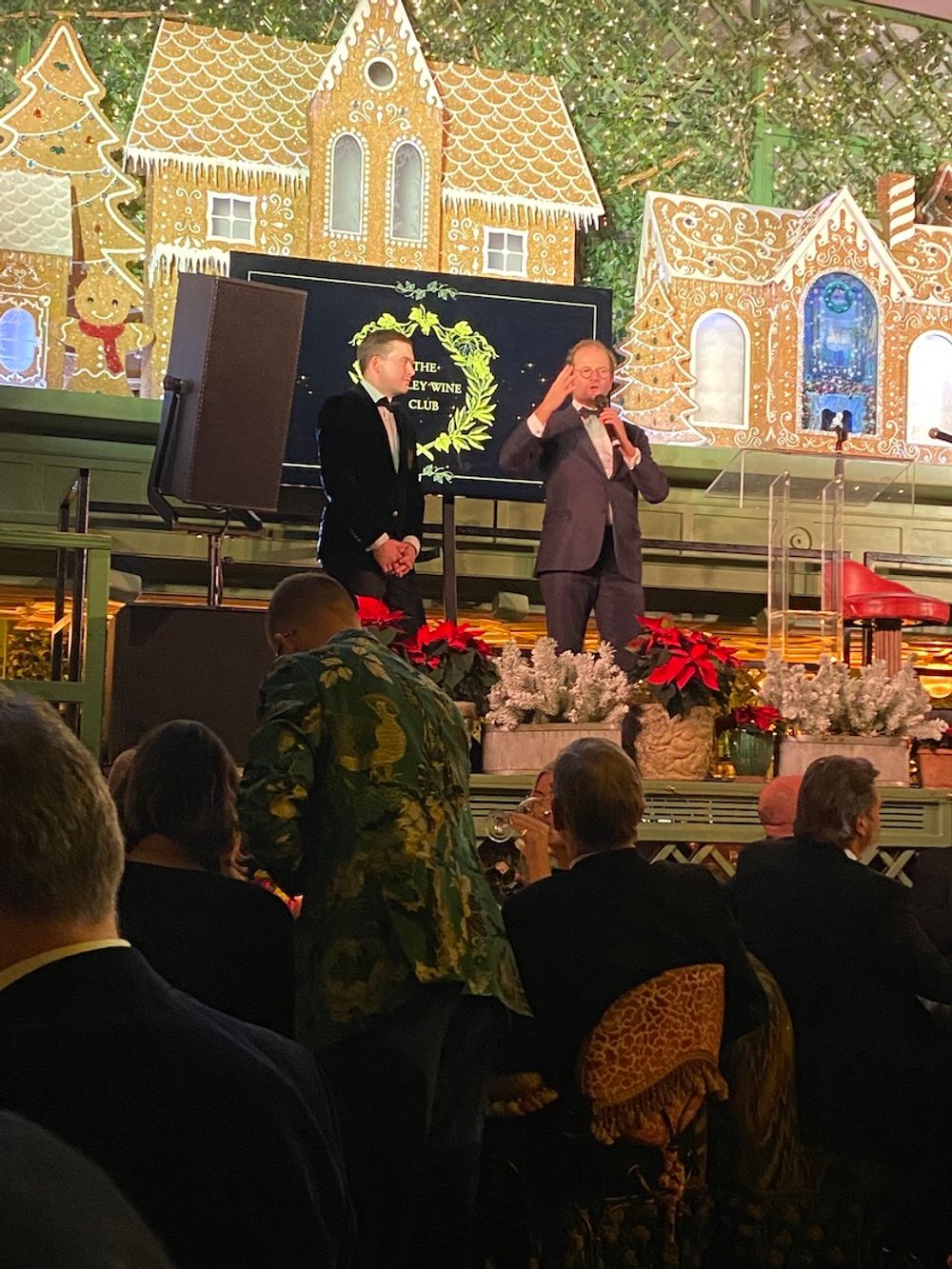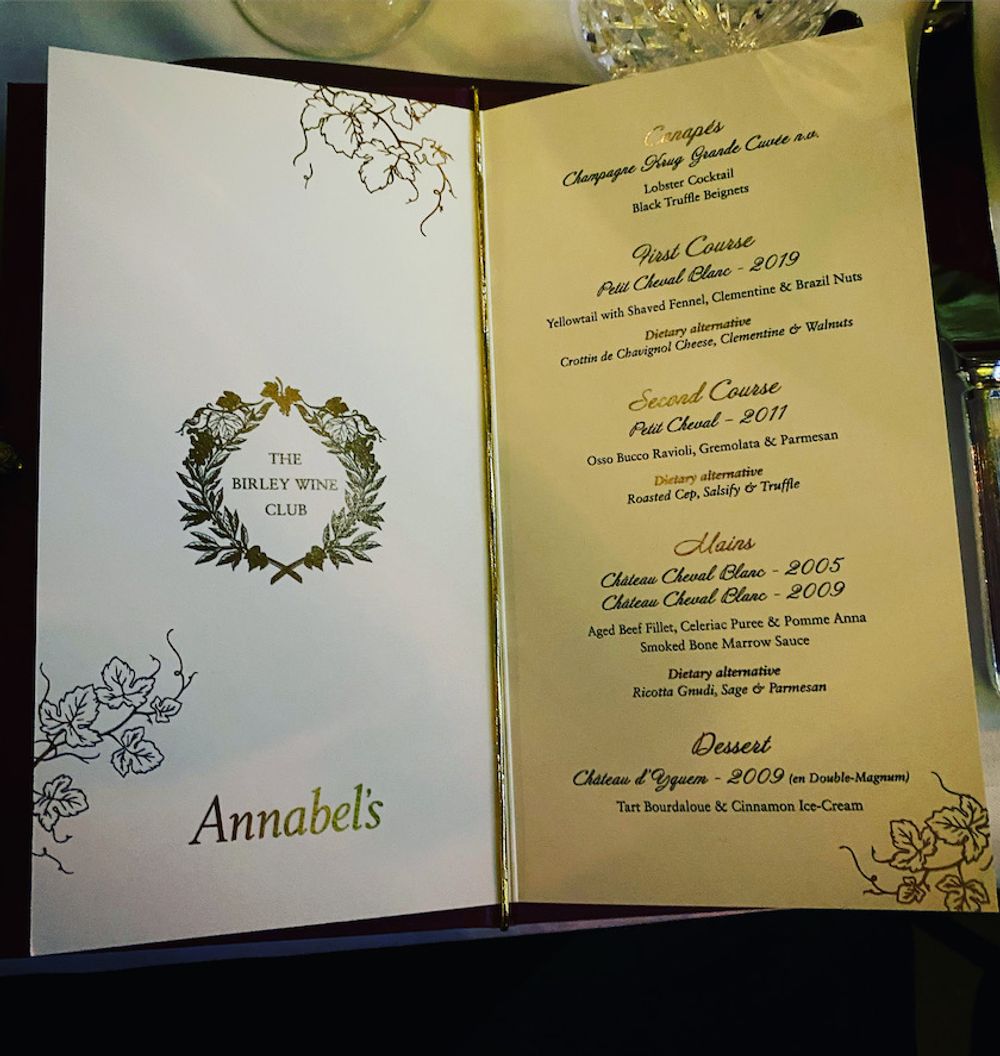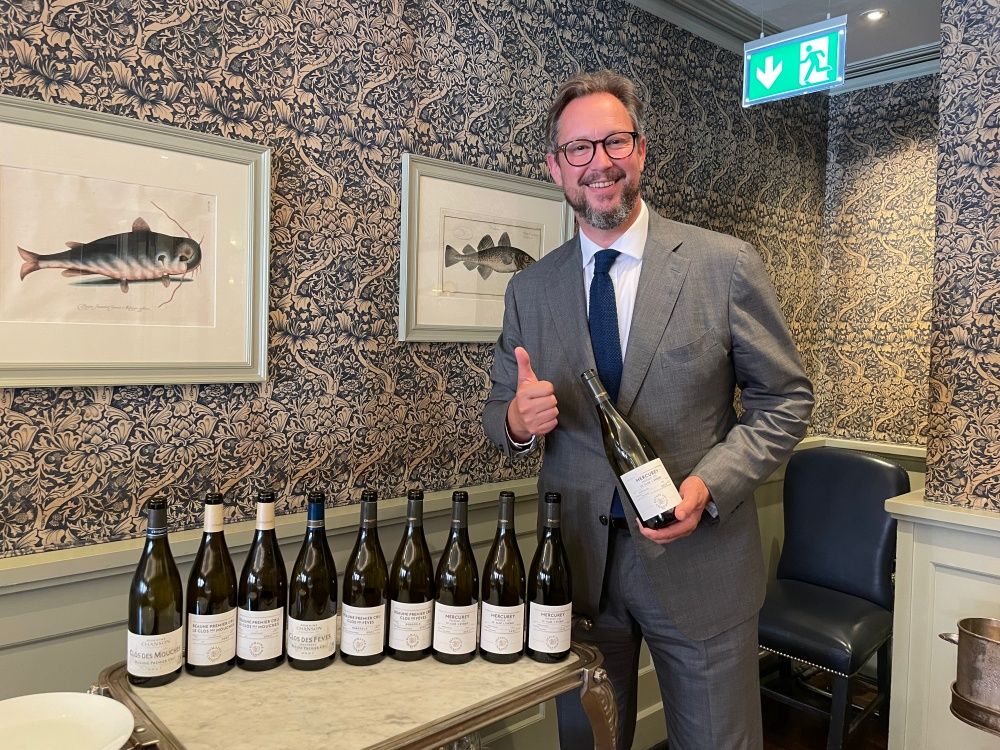“You could say this was the vintage where winegrowers could sit back and relax in an armchair,” said technical director Pierre-Olivier Clouet, about the 2009 Cheval Blanc.
Much credit must go to the Birley Wine Club, and its members and guests, for raising £102,000 at a charity wine auction dinner at Annabel’s in London in early December. If patrons were fortunate enough to drink Cheval Blanc from both the great 2005 and 2009 vintages as well as Krug NV and Yquem 2011, they dipped into their pockets to bid generously for several lots of classic wines from Bordeaux, Burgundy, Champagne and Italy.

Pierre Lurton at the Birley Club, London December 8, 2021
More on the wines drunk later but, given the proximity to Christmas, first a word on where the proceeds raised are going – to the Food from the Heart Campaign. This was launched last year by the Caring Family Foundation, which estimates that two million children face food insecurity in the UK each month. “This Christmas, we aim to distribute 100,000 meals to children in need,” revealed Richard Caring, adding that the foundation that he and his wife Patricia set up is funding projects both in the UK and Brazil. These are supporting both women and children’s causes by working closely with grassroots organisations to have a long-term impact.
The fact that Pierre Lurton, the CEO of Château Cheval Blanc and Château d’Yquem, flew in from France to attend the dinner underlined his brands’ commitment to the evening. He admitted that the 2021 vintage in Bordeaux was looking “average’ but there was nothing average about the vintages of the wines that were tasted.

One of the many treats in store of a memorable night
First the 2005 Cheval Blanc. Pierre-Olivier Clouet, the winery’s technical director, considers it one of the greatest vintages of the millennium. “Yes Cheval Blanc 2005 is a very great wine, and it’s not hard to see why,” he said. “Drought conditions set in very early and lasted throughout the growing season, having a beneficial effect. This resulted in a correspondingly early stop to vegetative growth, an early start to ripening and very small berries. These small grapes were remarkably concentrated in terms of colour, aroma, tannin and acidity. This added up to a perfectly complete wine.”
The figures for 2005 are telling. As few as 344 millimetres of rain between January and September (compared to the average of 572) in what was a very warm year (temperatures between April and September being 1.7C higher than the seasonal average). The sugar levels were unprecedented but the fruit was not excessively ripe or candied. Acidity levels were a little lower than normal but a pH of 3.92 meant total SO2 levels were not unduly high at 94 mg/l.
The wine itself (14% abv) was exceptionally dark, deep and intense. Rich in every aspect, it had concentrated black fruit on the palate and a beautiful tannic texture. If power and richness came from the Merlot (51%), elegance and complexity was provided by the Cabernet Franc (49%). It has a long life ahead of it, with enough freshness and structure to last well into the 2030s or longer.

That menu in full
As for the 2009 Cheval Blanc, Clouet described it as another great vintage. “Stage after stage of the growing season took place seamlessly and under ideal conditions,” he said. “You could say this was the vintage where winegrowers could sit back and relax in an armchair. Flowering occurred quickly and evenly at just the right time, as did veraison. Ripening took place uninterrupted over a long period, and we were able to start picking in mid-September – one plot after the next, each at optimum maturity since the weather was so cooperative.
“We often say at Cheval Blanc that we like to pick the fruit at ‘al dente’ when the grapes are juicy and fresh. We tasted them as soon as they arrived in the cellar as we did the first must. It was clear the wine would be very full-bodied and generous. There was an incredible odour of cherry and raspberry in the cellar, and we were sure a great vintage was in the making. What makes Cheval Blanc so unusual is that the Cabernet Franc adds inimitable freshness and elegance, with hints of menthol and eucalyptus, resulting in a delicate balance and great ageing potential thanks to its tannic backbone.”
These tannins in the 2009 are so fine-grained that they melt in the mouth, feeling silky on the mid-palate. Seductive floral aromas, including violet, and a cornucopia of notes of fresh fig, blackcurrant, blackberry, raspberry and mint were apparent. Above all, there was perfect balance between exuberant concentration and finesse thanks to the wine’s remarkable freshness (probably enhanced by a lower pH of 3.71). Abv again came in at 14%.
The Yquem 2011 was creamy and opulent in a year where conditions were perfect for noble rot. Five ‘tris’ or passes through the vines were made to pick the grapes, according to Sandrine Garbay, Yquem’s head winemaker. “Our average yield is still only about 10 hl/ha, but the level of residual sugar has gone up,” she said. “It always used to be 100-110 g/l but now we aim for 120-140g/l. The main changes since I took over as cellar master in 1998 have been to lower the time of ageing in barrels from 36 to 24 months, and to limit the introduction of air into wines during barrel-ageing. We rack from barrel to barrel without air, which helps to preserve the fruits aromas in the wine, particularly the thiols. That’s why our wines are now quite better to drink young, even two years after bottling because the fruits are there.”
All photos ©mrvinosaurus.










































